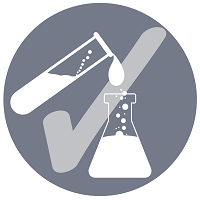Back
Formulation and Delivery – Chemical
Session: Rapid Fire: Advances in Engineering Technologies For Drug Substance and Enabling Drug Product (CE)
Development of Reentry Vehicles and Payloads for In-Orbit Drug Development
Tuesday, October 18, 2022
3:15 PM – 3:30 PM ET
Location: 205 AB

Jordan Croom, M.S.
Head of Mechanisms
Varda Space Industries
El Segundo, California
Rapid Fire Speaker(s)
Drug development in microgravity brings many advantages for drug substance development and manufacturing. Microgravity researchers have demonstrated that the absence of buoyancy, sedimentation, and convection leads to improved control over particle size distributions, polymorphism, and the kinetics of crystallization. While microgravity addresses a range of formulation challenges, limited access to space previously mean it was not practical to conduct microgravity drug development for commercial use. This talk discusses the development of a fully autonomous, unmanned orbital reentry vehicle for in-orbit drug development. The development of antisolvent and melt/quench hardware, strategies for operating within the constraints of spacecraft design, and unique considerations for hardware in the absence of gravity will be presented. Our partner’s presentation will focus on preliminary ground-based results and stability studies to demonstrate the experiments can handle pre-launch, launch, and re-entry conditions. Autonomous, in-space drug development is rapidly coming online, and launches are available starting in 2023.
Learning Objectives:
- Understand the benefits of microgravity for small molecule polymorph discovery, form isolation, and manufacturing.
- Understand the constraints and capabilities of autonomous antisolvent and melt/quench microgravity payloads.
- Understand how to could leverage microgravity pharmaceutical development payloads for various drug development and manufacturing applications.


